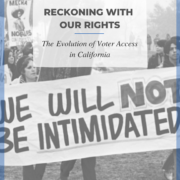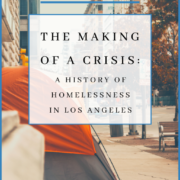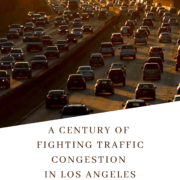Refugee resettlement and the remaking of America’s image abroad
By Dr. Claire Higgins
At his inauguration, President Joseph R. Biden declared that ‘once again… America can be ‘the leading force for good in the world’. The president’s pledge to increase the number of refugees resettled in the United States is a core part of this ideal, and one for which there is historical precedent. Refugee resettlement has been a foreign policy tool for previous administrations, used to shape the country’s international image and, in some cases, attempt to overcome an uncomfortable past.
The Biden administration is seeking to revitalize the US Refugee Admissions Program (USRAP). Cut to historic lows by the Trump administration – a ceiling of just 15,000 places in FY2020 – the USRAP could accommodate up to 125,000 places this year under President Biden’s commitment. Through this program, the United States government works with the UN refugee agency (UNHCR) and other partners to help people whose lives or safety are at risk overseas to resettle in cities and towns across America. It is distinct from the reception and processing of asylum seekers who arrive at U.S borders, which is another key focus for the new administration.
The United States is one of about 31 countries that operates a formal resettlement program, and in the pre-Trump era it offered the largest number of places every year – an annual average of around 72,000 places in the ten years prior to 2017. Today, with some 1.4 million refugees in need of a new life in a third country, the UN High Commissioner for Refugees, Filippo Grandi, has warmly welcomed President Biden’s commitment to increase the program. By sharing responsibility for displaced people, the United States is better placed to encourage other countries to host asylum seekers and refugees.
Historically, refugee resettlement has been an important part of United States’ foreign relations. In the second half of the 20th century, and in the years before Trump, successive U.S administrations regarded refugee resettlement as a foreign policy priority. For example, as Gil Loescher and John Scanlon wrote in their classic history of U.S refugee policy, Calculated Kindness, during the Cold War the US government admitted individuals fleeing communism as a way to signal an ideological victory for the West. Heather Stur has described how President Gerald Ford’s administration admitted tens of thousands of Vietnamese refugees in 1975 as a ‘form of damage control’ in the aftermath of the United States’ war in Vietnam, an effort to regain America’s moral authority on the world stage. When in 2016 the Obama administration sought to generate international action to increase resettlement of Syrian refugees, some refugee advocates viewed this as an attempt to make up for the administration’s inaction in preventing atrocities in Syria.
President Biden has described his administration’s plan for the USRAP as restoring ‘America’s historic role in protecting the vulnerable’. With this language, the president is evoking a popular image of the United States as a haven for those fleeing oppression in search of liberty. No matter how flawed or simplistic that image might be, it has a discursive power, fulfilling a community’s desire to see itself in a positive light. Refugee resettlement, as Catherine Dauvergne has written, is seen as distinguishing the nation as ‘good, prosperous and generous’ in the eyes of the world. After the isolationism of the Trump era – what the Refugee Council USA called an ‘abdication’ of humanitarian leadership – this is the kind of national image that Biden wants to project. An appeal to national values can also be a powerful persuasive tool in domestic politics, and Jaya Ramji-Nogalas has recently argued that in pursuing its immigration-reform agenda, the Biden administration should continue to remind the American public that refugees and migrants are ‘part of the fabric of our nation.’
The administration will face many challenges in seeking to expand the USRAP, including reduced capacity within those NGOs that assist with resettlement, and a backlog of successful applicants whose journey to the United States was stalled thanks to Trump-era policies and disruptions caused by COVID-19. Experts have noted that the depletion of the USRAP over the last four years will not be reversed overnight. But in talking up U.S leadership in refugee affairs, President Biden’s words represent a vital first step toward improving the United States’ response to the urgent needs of displaced people around the world.
Dr. Claire Higgins is a Senior Research Fellow at the Kaldor Centre for International Law at UNSW Sydney. She is also an Affiliate Scholar at the Institute for the Study of International Migration, Georgetown University.
Dr. Higgins was also 2019-2020 Luskin Research Fellow. Read about her research here.
Follow her at @higginsCM.







